Abstract
The Salmonella microsomal assay has become an indispensible tool for the screening of mutagens and carcinogens, particularly when a large number of samples have to be tested, as in the present context for the screening of air pollution. However, for a more definite identification of potential carcinogens, a verification of the results from bacterial tests has to be performed with a battery of other tests, including point mutations and chromosomal aberrations in eukoaryotic systems. While there is a close qualitative correlation between the mutagenic and carcinogenic property of chemicals, a corresponding quantitative correlation between the mutagenic and carcinogenic potency is not always found. One reason for this lack of quantitative correlation presumably depends on the fact that cancer is induced in two steps, of which only the initiating, but not the promoting, step constitutes a mutational event, which is reflected by mutagenicity tests. Present mutagenicity tests have concentrated on discrete major mutations, while mutations of polygenes, acting on quantitative characters, have largely been omitted. Mutational data from Drosophila indicate, however, that polygenes mutate at a considerably higher rate than major genes and that they have a comparatively strong effect in heterozygous condition. It seems of great importance to develop appropriate methods to study induced mutations of polygenic systems and to get a better understanding of the properties of these genetic systems and an evaluation of the risk connected with induced mutations in polygenes.
Full text
PDF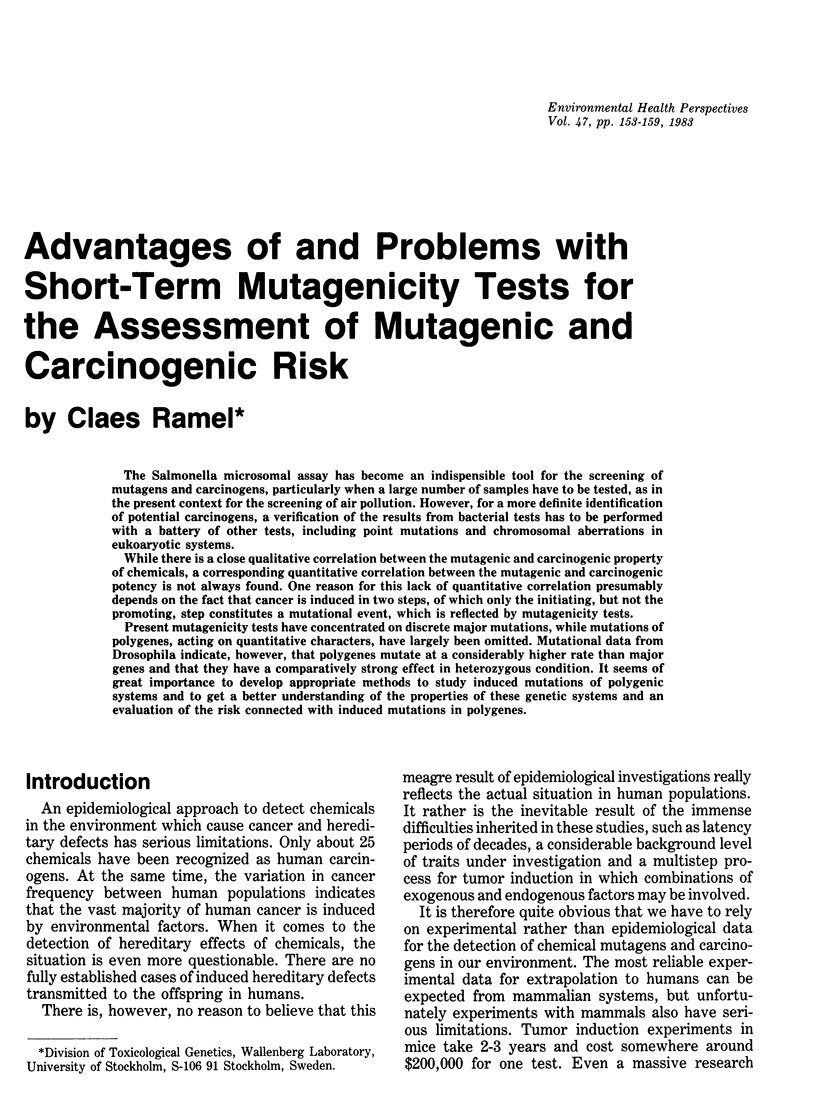
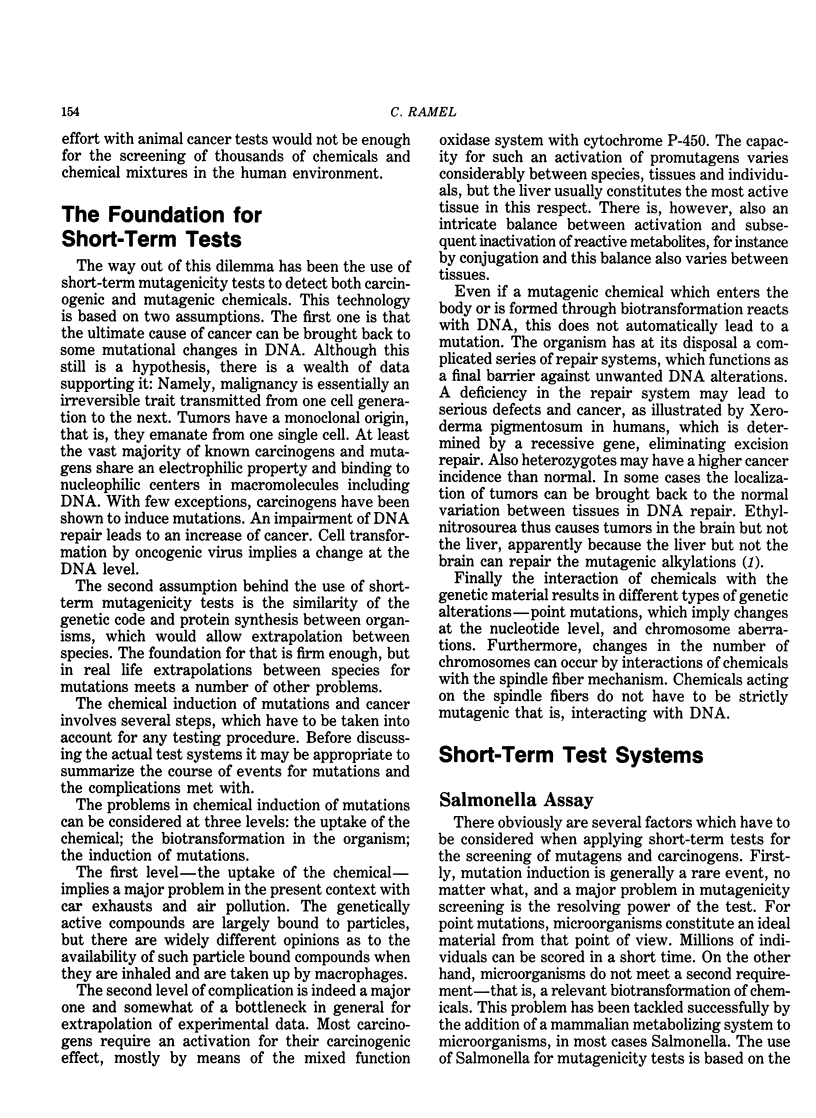

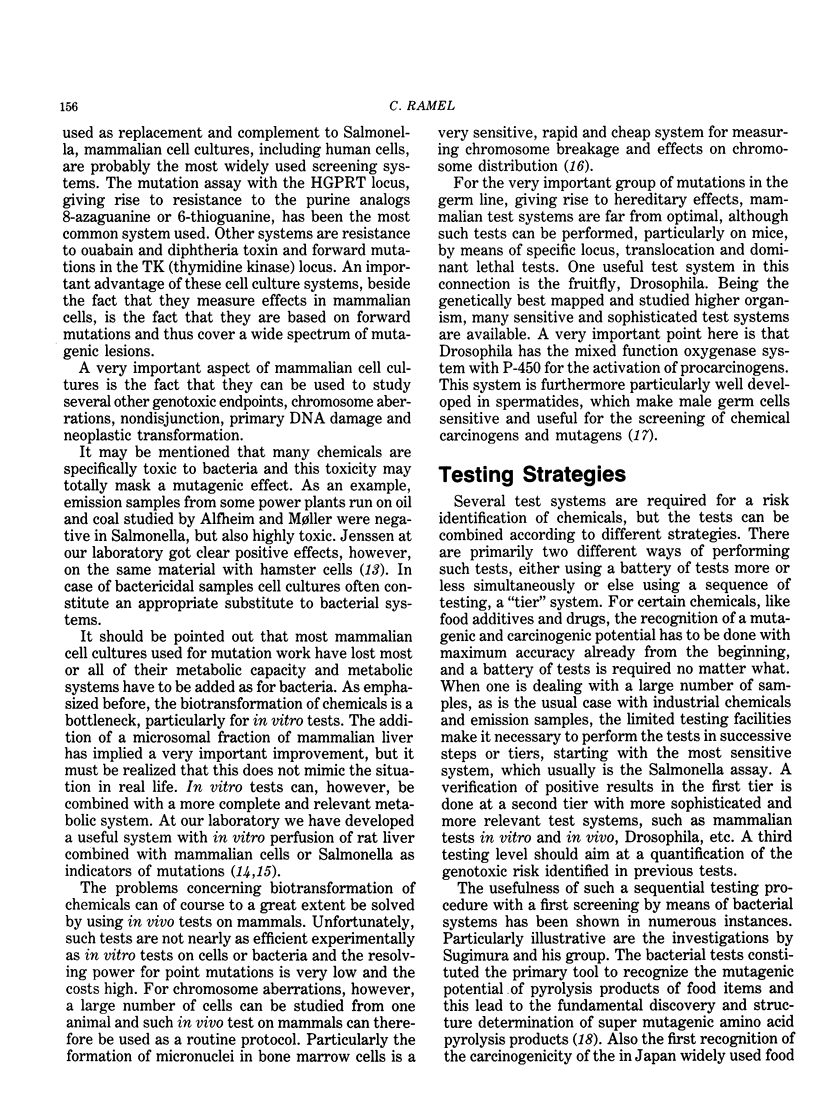
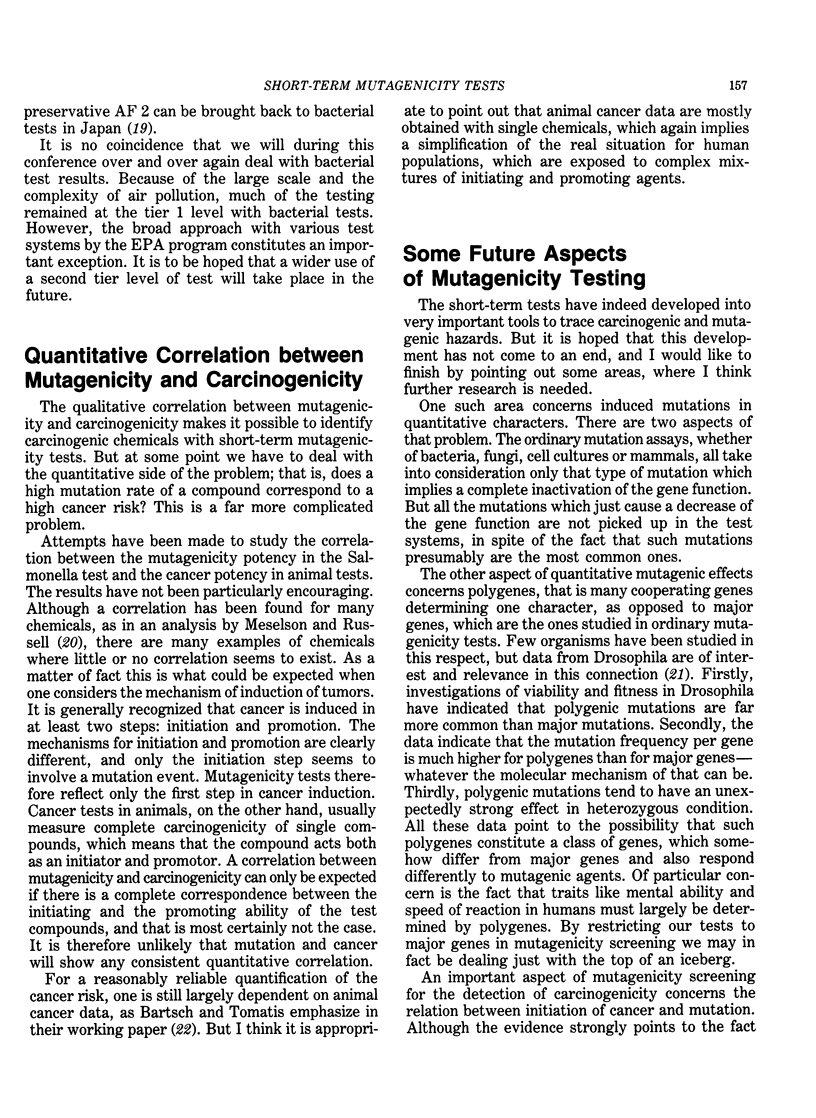
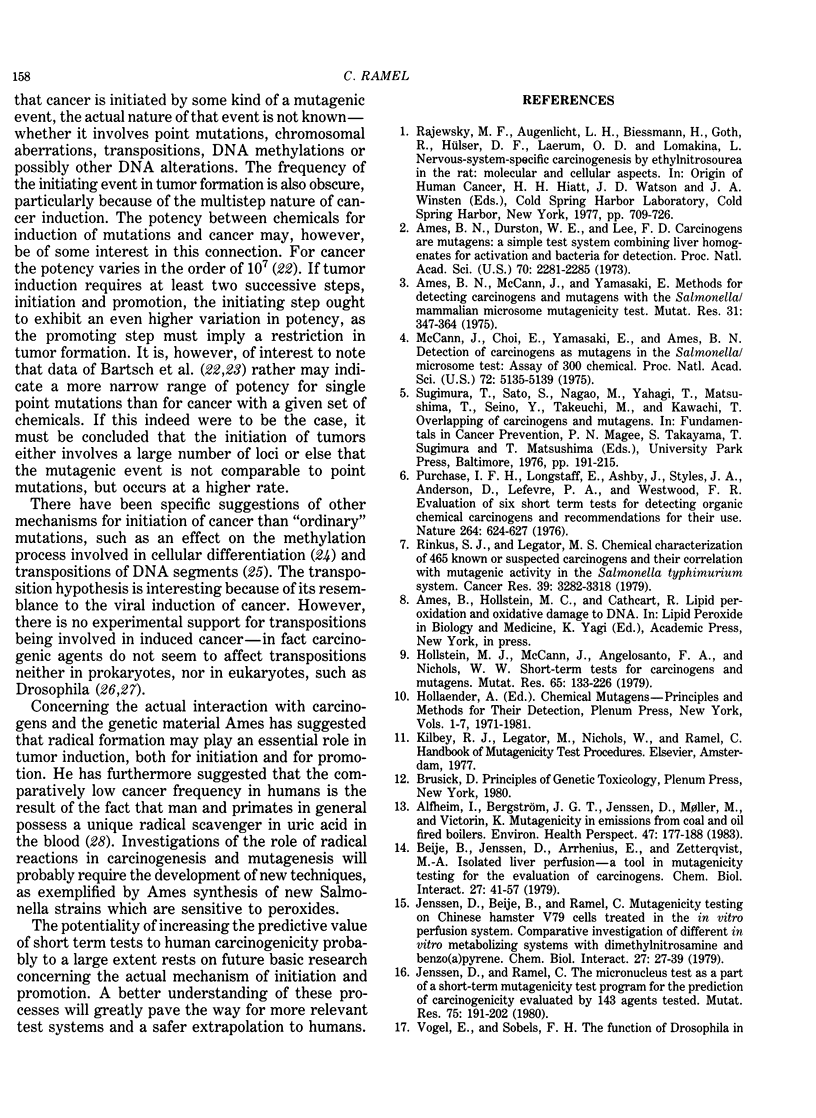

Selected References
These references are in PubMed. This may not be the complete list of references from this article.
- Alfheim I., Bergström J. G., Jenssen D., Møller M. Mutagenicity in emissions from coal- and oil-fired boilers. Environ Health Perspect. 1983 Jan;47:177–187. doi: 10.1289/ehp.8347177. [DOI] [PMC free article] [PubMed] [Google Scholar]
- Ames B. N., Cathcart R., Schwiers E., Hochstein P. Uric acid provides an antioxidant defense in humans against oxidant- and radical-caused aging and cancer: a hypothesis. Proc Natl Acad Sci U S A. 1981 Nov;78(11):6858–6862. doi: 10.1073/pnas.78.11.6858. [DOI] [PMC free article] [PubMed] [Google Scholar]
- Ames B. N., Durston W. E., Yamasaki E., Lee F. D. Carcinogens are mutagens: a simple test system combining liver homogenates for activation and bacteria for detection. Proc Natl Acad Sci U S A. 1973 Aug;70(8):2281–2285. doi: 10.1073/pnas.70.8.2281. [DOI] [PMC free article] [PubMed] [Google Scholar]
- Ames B. N., Mccann J., Yamasaki E. Methods for detecting carcinogens and mutagens with the Salmonella/mammalian-microsome mutagenicity test. Mutat Res. 1975 Dec;31(6):347–364. doi: 10.1016/0165-1161(75)90046-1. [DOI] [PubMed] [Google Scholar]
- Bartsch H., Malaveille C., Camus A. M., Martel-Planche G., Brun G., Hautefeuille A., Sabadie N., Barbin A., Kuroki T., Drevon C. Validation and comparative studies on 180 chemicals with S. typhimurium strains and V79 Chinese hamster cells in the presence of various metabolizing systems. Mutat Res. 1980 Jul;76(1):1–50. doi: 10.1016/0165-1110(80)90002-0. [DOI] [PubMed] [Google Scholar]
- Bartsch H., Tomatis L. Comparison between carcinogenicity and mutagenicity based on chemicals evaluated in the IARC monographs. Environ Health Perspect. 1983 Jan;47:305–317. doi: 10.1289/ehp.8347305. [DOI] [PMC free article] [PubMed] [Google Scholar]
- Beije B., Jenssen D., Arrhenius E., Zetterqvist M. A. Isolated liver perfusion--a tool in mutagenicity testing for the evaluation of carcinogens. Chem Biol Interact. 1979 Sep;27(1):41–57. doi: 10.1016/0009-2797(79)90148-0. [DOI] [PubMed] [Google Scholar]
- Cairns J. The origin of human cancers. Nature. 1981 Jan 29;289(5796):353–357. doi: 10.1038/289353a0. [DOI] [PubMed] [Google Scholar]
- Holliday R. A new theory of carcinogenesis. Br J Cancer. 1979 Oct;40(4):513–522. doi: 10.1038/bjc.1979.216. [DOI] [PMC free article] [PubMed] [Google Scholar]
- Hollstein M., McCann J., Angelosanto F. A., Nichols W. W. Short-term tests for carcinogens and mutagens. Mutat Res. 1979 Sep;65(3):133–226. doi: 10.1016/0165-1110(79)90014-9. [DOI] [PubMed] [Google Scholar]
- Jenssen D., Ramel C. The micronucleus test as part of a short-term mutagenicity test program for the prediction of carcinogenicity evaluated by 143 agents tested. Mutat Res. 1980 Mar;75(2):191–202. doi: 10.1016/0165-1110(80)90014-7. [DOI] [PubMed] [Google Scholar]
- McCann J., Choi E., Yamasaki E., Ames B. N. Detection of carcinogens as mutagens in the Salmonella/microsome test: assay of 300 chemicals. Proc Natl Acad Sci U S A. 1975 Dec;72(12):5135–5139. doi: 10.1073/pnas.72.12.5135. [DOI] [PMC free article] [PubMed] [Google Scholar]
- Purchase I. F., Longstaff E., Ashby J., Styles J. A., Anderson D., Lefevre P. A., Westwood F. R. Evaluation of six short term tests for detecting organic chemical carcinogens and recommendations for their use. Nature. 1976 Dec 16;264(5587):624–627. doi: 10.1038/264624a0. [DOI] [PubMed] [Google Scholar]
- Rinkus S. J., Legator M. S. Chemical characterization of 465 known or suspected carcinogens and their correlation with mutagenic activity in the Salmonella typhimurium system. Cancer Res. 1979 Sep;39(9):3289–3318. [PubMed] [Google Scholar]
- Simmons M. J., Crow J. F. Mutations affecting fitness in Drosophila populations. Annu Rev Genet. 1977;11:49–78. doi: 10.1146/annurev.ge.11.120177.000405. [DOI] [PubMed] [Google Scholar]


